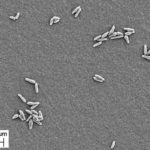Daily Archives: May 23, 2016
Long-term outcomes of robotic pyeloplasty for ureteropelvic junction obstruction
The search for new drug candidates to treat Chagas disease
How cancer begins and how to prevent it
It’s time to leave the wilderness
Child Neurologists are the specialists who take care of children with diseases of the brain, spinal cord, nerves, and muscles. Some of those conditions include epilepsy, migraine, cerebral palsy, muscular dystrophy, and autism. Child Neurology was recognized
Dining at extraordinary locations: new species of bacteria on fatty diet
A new test to select more effective treatments for lung cancer
Sadly, the majority of patients with Lung Cancers who cannot be treated by surgery to remove their tumour, die within a few years. Small numbers are beginning to benefit from chemotherapies which target very specific types of










